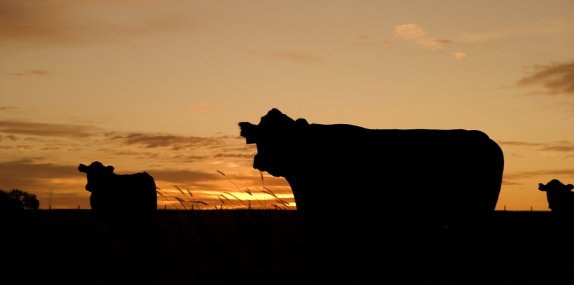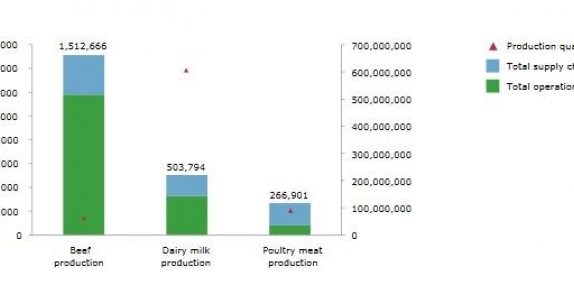
What are the natural capital costs of beef, dairy milk and poultry meat? In a recent report of The Economics of Environment and Biodiversity (TEEB), the calculations were presented. The total natural capital cost of beef, dairy milk and poultry meat are respectively $1.5 trillion; $0.5 trillion and $0.26 trillion per year, deriving mostly from land use change, then greenhouse gases and air pollutants (GHG emissions), water consumption, water pollution (from fertilizers application) and soil pollution (from pesticides application). Calculations were made during 2014, and were adjusted to US 2015 prices taking into account inflation. Figure 1 shows the total natural capital cost of beef, dairy and poultry production worldwide.

The report presents the top-five countries that have the highest natural capital costs for each livestock type. 50% of all beef natural capital costs come from Brazil, US, China, Argentina and Mexico. 39% for dairy milk (US, India, Brazil, China and the Russian Federation). And 43% for poultry (US, Brazil, China, Indonesia and the Russian Federation). The EU28 makes up 8%, 19% and 11% of the total natural capital costs of beef, dairy milk and poultry respectively.
The share of the total global natural capital cost for the top-five contributing countries is 50% for beef (Brazil, United States, China, Argentina and Mexico); 39% for dairy milk (United States, India, Brazil, China, Russian Federation); and 43% for poultry (United States, Brazil, China, Indonesia, Russian Federation). EU28 contributes 8%, 19% and 11% of the total natural capital cost of beef, dairy milk and poultry production respectively.
The report was reviewed by scientists around the world and developed in partnership with Wageningen University & Research, True Price and Trucost. The method used was a combination of a top-down and bottom-up approach. The top-down approach is a high-level analysis that identifies key geographical hotspots and material natural capital impacts. The bottom-up approach goes into more detail and compliments the top-down approach. The bottom-up approach assesses the impacts upstream till farming gate and excludes the impacts from processing and consumption.
Governments and policymakers have a responsibility to preserve natural capital to protect our ecosystems and make our food systems more sustainable. Increased knowledge of valuation frameworks such as seen in this report should incentivize governments to create policies that value natural capital, to ensure that the full price of livestock production is paid through e.g. environmental taxation and regulation. This study creates transparency in natural capital impacts and should encourage action amongst stakeholders to reduce the most material costs such as land-use change and GHG emissions. The ball is now in the governments' court. It’s time to start a dialogue on the links between consumer behaviour, change in diets and natural capital preservation. The real costs of consumption habits is a subject that matters to us all.
Michel Scholte is the Director and Co-Founder at True Price.
Share this page: